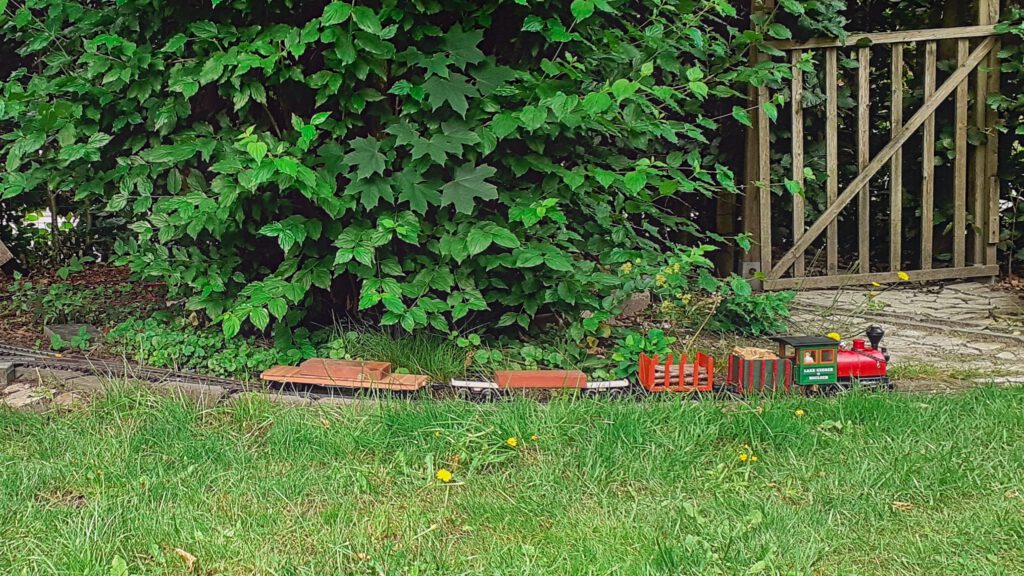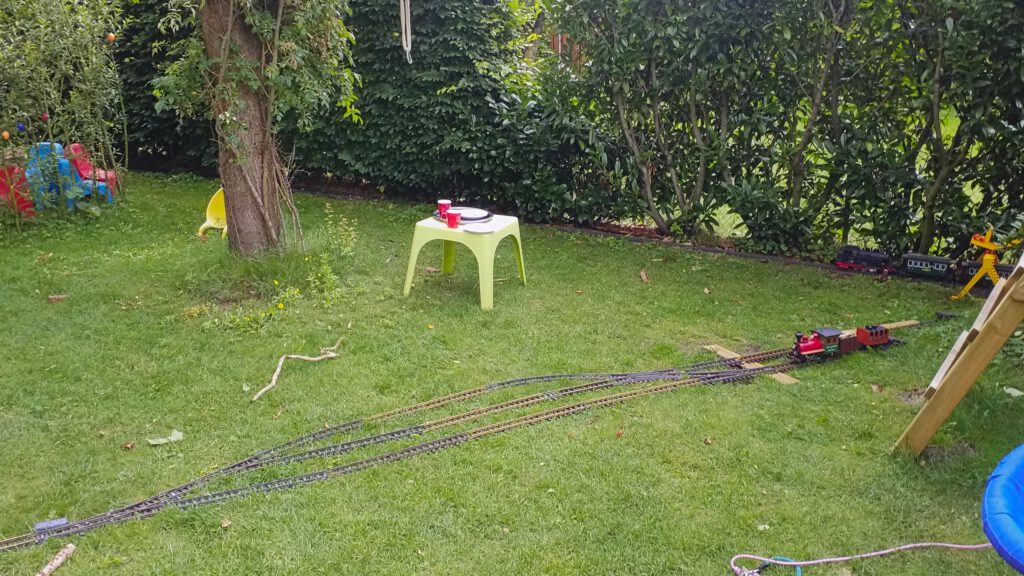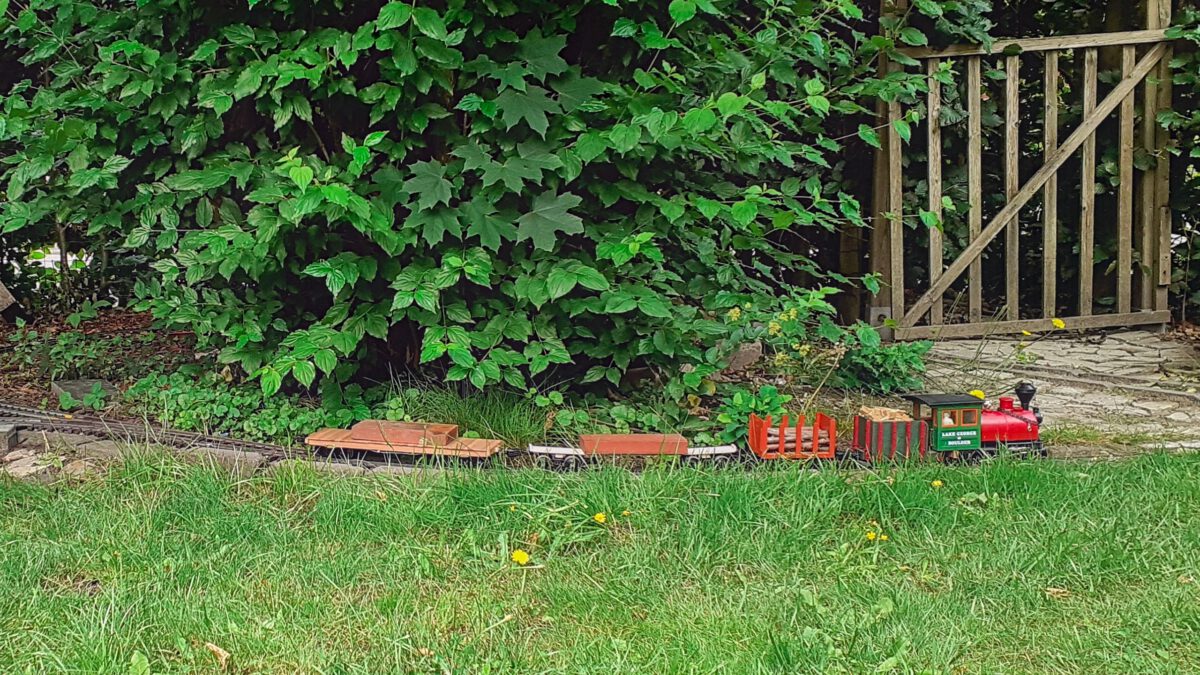This operation session was scheduled rather spontaneously and spurred me into building a prototype for a flatcar. Accordingly, I was quite expectant concerning the experience I’d gain with the new waggon.
Since we only had a relatively short time for operations and I was preoccupied with test runs, there are only a few pictures. In return, I learned lots of lessons.
Lesson #1: The test track is not the reality
While test-running my test waggons I actually managed to navigate body-mounted couplers through a R1 curve (600 mm radius). Apparently, I was quite lucky because on my friend’s layout I’ve experienced several derailments, even in R3 curves (1200 mm radius). With couplers mounted to the waggons’ frames, the tracks’ foundations obviously play a major role.
On this occasion it becomes clear, that the flatcar is really sturdy. In the following picture one can clearly see how the test waggon bends under its load, since it’s made from a single 6 mm thick board of plywood. The flatcar on the other hand uncomplainingly carried loads in excess of 10 kg.

Lesson #2: The bogies need some play
My friend’s layout dates back to the 1990s. It’s in very good shape considering its life span, however there are many sections of track which aren’t perfectly level. My bogies’ wheelsets have low flanges, which strongly react to such imperfections. Fortunately, the solution is quite easy: Giving the bogies’ mountings a bit of play allows for a three-point bearing which reduces the risk of derailments.
Lesson #3: Couplers on bogies have their merits
Not just the imperfections mentioned in lesson #2, but some gaps in the frogs of some points (switches) and other challenges of the trackwork resulted in many derailments over the day. From which I’ve learnt: bogies like to be guided.
If the couplers are mounted to the waggon’s frame, the bogies have to find their own path and tend to run their flanges against the rails more often. At older frogs or other demanding spots of track this leads to the first wheelset riding up the rails. If however the couplers are mounted to the bogies, the latter are guided into the following curve by the leading vehicle and appreciably gain in better tracking.
Lesson #4: Huzzah for variety
OK, this is more of a lesson which my friend has learnt. Since we both vowed to hold several operation sessions a year, he expanded his layout to some extent.
Since the garden has to have room for the family, he achieved a nice tradeoff: the fixed layout ends at a yet-to-finalize bridge crossing the pond and therefrom portable track is laid as needed.

Thus a new layout can be realised each time and we have lots of room to experiment with. It also nicely fits into another idea of mine, but that’s not official, yet.
Lesson #5: Shunting with a chain needs a winch
I’ve found many good uses for the chain fixed to my N°1. Especially towing waggons while running in reverse. However, it’s remarkably tedious if one has no control over the chains’ length. So, I’m planning a bricolage for next week to improvise a winch.

